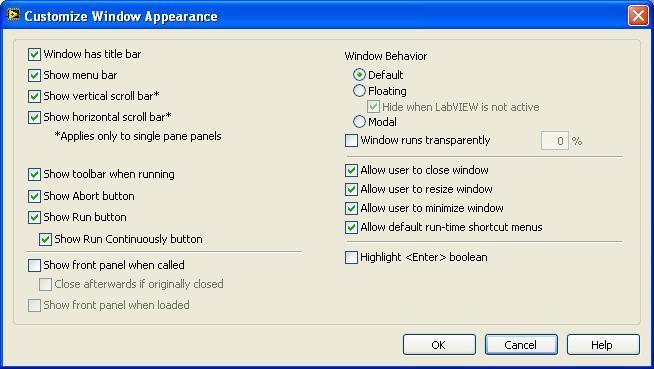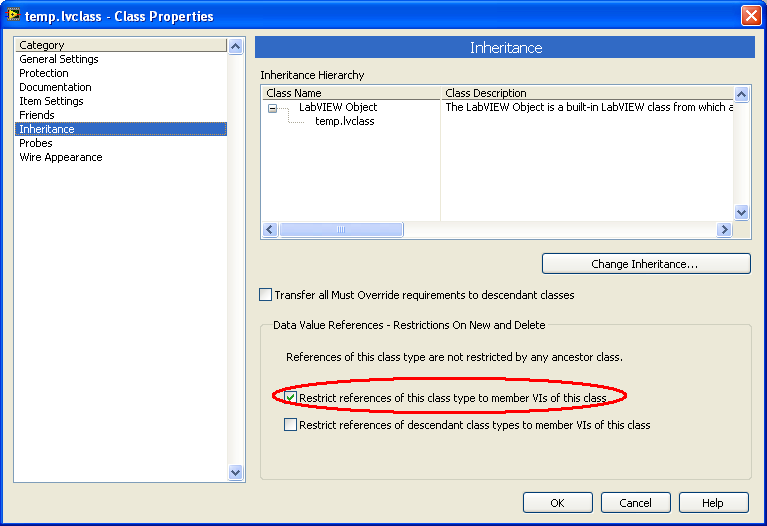
Mellroth
Members-
Posts
602 -
Joined
-
Last visited
-
Days Won
16
Content Type
Profiles
Forums
Downloads
Gallery
Everything posted by Mellroth
-
+1 The only time I see icon terminals are when someone new to LabVIEW starts programming, but then it is only because icons are the LabVIEW default. /J
- 74 replies
-
You should always close references that you open (better safe than sorry), this is true for Files as well as Queues, Notifiers etc.. If you don't close a refnum, and continuously open new references you have introduced a memory leak, that in the end can lead to a crash. /J
-
I'm not sure I completely understands your question, but just calling the "Write To Text" method replaces any previous content (see help). If you want to append new data to the file you'll have to; Open the file with "Open/Create/Replace file" Move the pointer to the end of file using the "Set File Position" Write new data with "Write To text file" Close file refnum /J
-
closed review Filter Error Codes (Error Package)
Mellroth replied to Wouter's topic in OpenG Developers
I would move the Merge Error inside the Error case. If "error in" doesn't contain any error the output should be the "upstream error", i.e. no need to merge. /J -
I'm sure it wasn't one of the RT sessions, instead I believe it was a tips and trick session with Darren. /J
-
I just learned about this little guy at NI-Week this year, I have only tested it briefly so far, but I believe you get us resolution with this as well. /J
-
You are probably right, but I still think there should be a OpenG tool that can create a listing of all OpenG modules and their licencing with a default layout. If you want to change the default layout, use an API to build your own. For most people that would be enough, but the point is that they will at least be able to correctly give credit to OpenG. Regarding performance, I don't think that is an issue, we have used a tool to scan pretty big projects for specific strings, and that completed in very short time. /J
-
I would like to have this as an option, i.e. to have the licence information available in the RunTime. Since most of the licencing states that you have to give credits where it is due, this would be an easy way of including all this licencing text, and never forget a toolkit. /J
-
I would really like to have a OpenG tool that can scan and create a Licence information file, perhaps also open a Licence dialog. A tool like this would depend on that the licence information is intact even after a we build an application (where BD's and perhaps FP's are removed)? /J
-
Why not check the local decimal point before the event handling, e.g. by converting a number to string and check for the decimal character in the string? Then use this information to determine if ',' or '.' should be allowed in the Key Down? event. /J
-
It was LabVIEW 2010. The problem was that I used a typedef enum to define the NSV type, and this was not accepted by LabVIEW. The typedef was deployed in the same lvlib as the shared variables and was accessible on the RT block diagrams. Anyway, I managed to get around it, and I believe NI was able to reproduce the issue with my shared variable setup. /J
-
-
Problem with data value reference creation
Mellroth replied to DAOL's topic in Object-Oriented Programming
-
-
Get reference to another built .exe application
Mellroth replied to patufet_99's topic in LabVIEW General
My guess is that you are using the same TCP port for both development and application, which means that ExportedVIs is the list of exported VIs from development. Try to add the following to the application ini-file server.tcp.port=3364 then specify port 3364 in the ApplicationOpen method. /J -
Have you tried putting a always copy node after the unbundle node on the numeric wire? Right before the unbundle node? /J
-
I can reproduce this in LabVIEW 8.6 but not in LabVIEW 2009. My guess is that LabVIEW 2009 handles mulitple UI events better than 8.6; if you make sure that the property node is written before updating the indicators, it seems to work in LV8.6 as well. /J
-
Inlining a subVI that uses the In Place Memory Structure
Mellroth replied to Onno's topic in LabVIEW General
I too tried to replicate the code, but just got a copy of the input array. I would expect that the loop should be defined as for( i=0; sizeOfDim(x,0) - 1; i++) because I think the Formula Node is 0-indexed like LabVIEW. /J -
Inlining a subVI that uses the In Place Memory Structure
Mellroth replied to Onno's topic in LabVIEW General
Can inlining and subroutine priority really be combined? This would mean that the inlined code should run at another priority that the hosting VI. I have never tried so I don't know for sure. 1. How many elements are you feeding to your subVI when you get these times? 2. Are you running this on Windows/RT? /J





